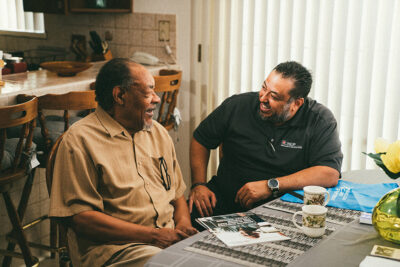Adding Consequential Conditions to your EEOICPA White Card

Albert B. Frowiss “Sr”, EEOICPA Independent Advocate
A consequential condition is any illness, injury, impairment, or disease that is a consequence of an accepted condition under EEOICPA. There are four types of consequential conditions:
- Metastasized cancer(s)
- Conditions resulting from medical treatment of the accepted condition(s)
- Independent incidents related to an accepted condition(s)
- Natural progression and/or development (pathogenesis)
If you have a condition that was caused by treatment for an accepted illness, but isn’t listed on your DOL Medical Benefits White Card, it may be a consequential condition. Often, these illnesses involve side effects to another part of the body due to treatment, drug, or radiation therapy for an accepted condition. A few examples of this include:
- Neuropathy due to cancer chemotherapy.
- Osteoporosis as a result of steroid treatment.
- Radiation burns or skin rashes from cancer radiation therapy.
It is important to note that while primary illnesses are caused by exposure to radiation, chemicals, etc., consequential conditions are caused by the primary illness. The diagnosis date for a consequential condition must come after the primary diagnosis, and the physician must link the secondary condition to the primary. Common examples of consequential conditions and their primary illnesses are:
- Primary ➡ Secondary
- COPD ➡ Diabetes
- Kidney Cancer ➡ Anemia
- Asbestosis ➡ Mesothelioma
Former workers can be covered not only for their primary illnesses, but also for consequential conditions, on their DOL Medical Benefits White Card.
You could receive up to $250,000 in benefits for your consequential condition. As an EEOICPA advocate, my mission is to help you maximize your benefits through the process of claiming a consequential illness.
To file a winning claim we need:
- A comprehensive statement by your licensed physician, rationally and directly linking the consequential condition to the primary illness.
- The ICD billing code for the secondary condition with the underlying diagnostic proof.
- The initial diagnosis date.
Consequential conditions can be just as impactful as primary illnesses. We encourage you to reach out for a free consultation and to claim your earned benefit today!
Albert B. Frowiss, Sr, is a non-attorney EEOICPA Advocate since 2007. He has helped nearly 5,000 claimants and wins about 95% of the cases he accepts. His paid cases have accounted for about $1 billion in tax-free awards of the $17 billion paid. Frowiss is a trusted advocate for many of Nuclear Care Partners’ patients across the country.
Contact Al Frowiss, Sr. for a free consultation at:
www.frowiss.org
Phone & Fax: 858.756.1494
P.O. Box 909, Rancho Santa Fe, CA 92067;
FROWISS®
Or contact Nuclear Care Partners who can put you in contact with Al Frowiss, Sr.
*Disclaimer: Nuclear Care Partners does not receive any compensation for recommendations of Authorized Representatives.


